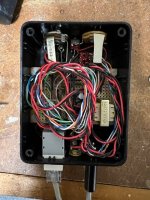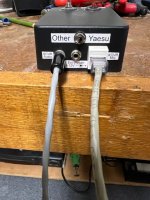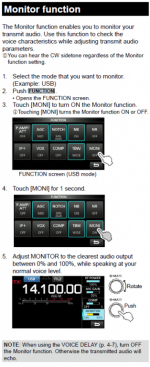You're welcome.
If you have "the whole setup", it might be worth just "double checking" that it all still works. Then you have a base line for your expectations. You can also try operating with the headset to see if you really like it. In the aviation world, there are two types of people... people that like DCs and people that don't.
I'll offer a couple observations on utilizing DC headsets... especially how it applies to ham radio. Again to help set your expectations
- DCs have a lot of passive noise attenuation. You can look at the specs but its something like 26-32dB of outside noise attenuation. This is very helpful in things like noisy airplanes, vehicles, etc. This can also be great for radio if you're operating in an area with ambient noise that you'd rather not hear. It comes at a price, people can sneak up on you easier

- DCs have alot of clamping force. This is one of the main gripes from people that don't like DCs. DC offers various ear cups to help with comfort. My personal favorite is the gel ones. For extra comfort they sell cotton things that go over them as well.
- The human mind is used to hearing your self talk. When you're wearing DCs you're ears can't hear your mouth talking as well. As a result you really have to be careful that you don't start yelling. With awareness and practice its possible to re-train your brain to overcome this and just talk normal.
- This is probably this biggest factor in "usability" with the ham radio world I'd guess.
- To account for the above, systems that use DCs have a feature called "side tone" that puts some of the mic signal back into your headphones so that you can hear your self. On all the stock ham radios I've used headsets with, I haven't found one with side tone by the way.
Finally some commentary on your findings about impedance. You are absolutely right, aviation does it differently than ham radio. I don't know why. But I will say I haven't worried about the headphone impedance value much and just use it. In fact you can take the larger plug( 1/4" ) and put it straight into the radios headphone jack and thats always worked just fine. yeah the impedance is different, yeah you won't get optimal power transfer, but its always worked plenty well enough for me. The microphone is the part you should pay attention to. Especially the type and levels between what the radio expects and what the headset is providing. Understanding the circuitry in that magic black box might be necessary.
Good luck and enjoy the project to tinker on.









